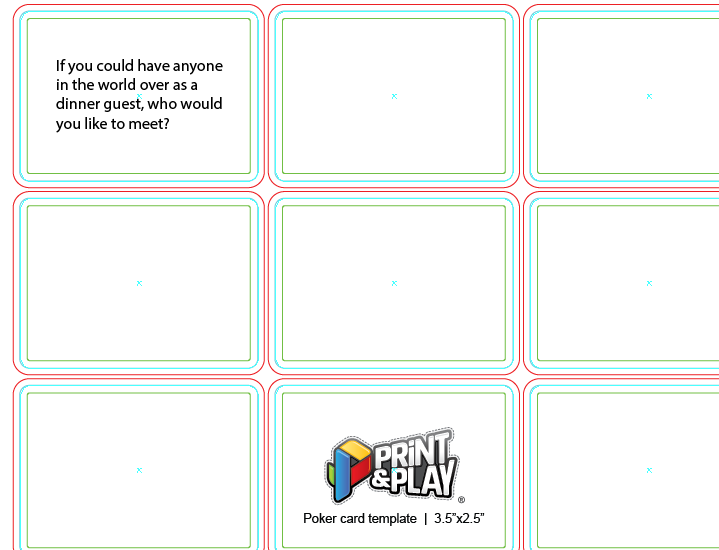Takeaways:
- Emotion is a crucial part of player experience
- Knowing and understanding how and why you feel things is valuable
- Always get a prototype in front of a player as soon as humanly possible
INFATUATED
Game Design Documentation by Charlie Feuerborn

My inspiration & background: “Turning Out Pt. ii” by the indie pop group AJR. A sequel to the soul-searching “Turning Out” from the EP What Everyone’s Thinking, the songwriter, Ryan Met, describes it as a tearjerker. “It was the hardest song I’ve ever written. 100%. We don’t even wanna play that one live, ‘cause it’s such a sad, brutal song.”
The target emotion of the player experience: Heartbreak

Earliest iterations of the game pull some questions verbatim from a psychological study on love and affection, published in the New York Times by a participant in the study.
The questions begin as surface-level ice-breakers, but gradually escalate in depth and personal connection.
The first prototypes are made:
9/22/2019
To minimize playthrough length, only 7 questions are included and a 30 second time limit is set for each player to answer the questions. The questions are carefully selected and interspersed with bonding actions such as hugging and staring into each other’s eyes.


Card design inspiration from Hygge, an antigame with no scoring meant to incite “cosy conversation in pleasant company”

Preliminary playtest box art on a white granola bar box. Intentionally misleading with hearts and a cursive title “Infatuated”



Instructions Drafts - written 9/21/2019 and stylized 9/22/2019


Initial prototype: 14 cards total, though instructions lead players to believe there are 20, to be played in prescribed order.
First 10, questions of building vulnerability interspersed with fun actions: hugging, swapping seats, and a 60 second stare-off.


11th question has special instructions, shifting diction from “partners” to “players” and has players choose one player to say the words on the following three cards looking into the other player’s eyes. The time constraint is eliminated
Last 3 cards alienate both players.


9/22/2019- First External Playtest.
Playtesters: A pair of close friend. Playtester 1 on left, Playtester 2 on right
An iphone timer is used to track each answerer’s time
The phone alarm is loud and interruptive, plus the presence of phone is distracting.
Switch to subtle timer that ticks loudly at the 30 second mark and goes off at 60 seconds.
Playtester 1 could not look in Playtester 2’s face when delivering the final three cards, and showed cards; breaking rules.

9/26/2019- Second External (Game Designer) Playtest.
Playtesters: a pair of acquaintances both studying game design
Notable audience of workshop instructor and several observers. No pictures of the session were recorded.
Very interesting and successful playtest, with the emphasized emotions being “confused”, “betrayed”, and “upset”
Observers recommend Fog of Love for inspiration, Love Death & Robots for examples in pacing of a narrative in a limited time (10-minute-long episodes), as well as experimenting with trust as a component of heartbreak,

Toyed with player information model (symmetric vs asymmetric knowledge) to no avail.
Added “One player tell the other ‘you’re beautiful’ ” card
Made edits to the rules to enhance gameplay (encouraging players to make use of the full time given to them)

10/2/2019- Third external playtest.
Playtesters: a pair of students on the same floor, who know each other fairly well. Pictured before and after “switch seats” card
(bottom) Playtester 5 on left, 6 on right
Game has updated rules, new cards, and new box art (with vine-like & rose imagery)

Playtester #6 rendered speechless by unexpected reveal of first “killing” card.
Opposite player had told him “you’re beautiful” only minutes earlier, and waits nervously.
She is taken aback and blinks furiously for a few moments before composing herself with a stone face. Plays off game as “awkward” and emphasizes “lighthearted” feel to first portion
Resulting emotions:
“Jarred”

10/7/2019 Third External Playtest
Playtesters: pair of students studying together and actively flirting
Playtester 7 on left, 8 on right
Transition to stopwatch instead of timer to reduce player-phone interaction during the game
Players strike real connection

“What did I do?” - Playtester 7 description of how he felt after “killing” cards.
Playtester 8 felt like the cards attacked her, saying they were “super hurtful”
Experimented prefacing killing cards with “Time for the Truth! one player answer the following prompts”
Did not mesh well with other aspects of the game (timer, consistency of mutual actions, etc)

Players vocalized that they liked the handwritten design because it felt more “spontaneous”.
Final iteration retains handwritten, hand-made cards.

My inspiration & background: “Turning Out Pt. ii” by the indie pop group AJR. A sequel to the soul-searching “Turning Out” from the EP What Everyone’s Thinking, the songwriter, Ryan Met, describes it as a tearjerker. “It was the hardest song I’ve ever written. 100%. We don’t even wanna play that one live, ‘cause it’s such a sad, brutal song.”
The target emotion of the player experience: Heartbreak
Earliest iterations of the game pull some questions verbatim from a psychological study on love and affection, published in the New York Times by a participant in the study.
The questions begin as surface-level ice-breakers, but gradually escalate in depth and personal connection.
The first prototypes are made:
9/22/2019
To minimize playthrough length, only 7 questions are included and a 30 second time limit is set for each player to answer the questions. The questions are carefully selected and interspersed with bonding actions such as hugging and staring into each other’s eyes.
Card design inspiration from Hygge, an antigame with no scoring meant to incite “cosy conversation in pleasant company”
Preliminary playtest box art on a white granola bar box. Intentionally misleading with hearts and a cursive title “Infatuated”
Instructions Drafts - written 9/21/2019 and stylized 9/22/2019
Initial prototype: 14 cards total, though instructions lead players to believe there are 20, to be played in prescribed order.
First 10, questions of building vulnerability interspersed with fun actions: hugging, swapping seats, and a 60 second stare-off.
11th question has special instructions, shifting diction from “partners” to “players” and has players choose one player to say the words on the following three cards looking into the other player’s eyes. The time constraint is eliminated
Last 3 cards alienate both players.
9/22/2019- First External Playtest.
Playtesters: A pair of close friend. Playtester 1 on left, Playtester 2 on right
An iphone timer is used to track each answerer’s time
The phone alarm is loud and interruptive, plus the presence of phone is distracting.
Switch to subtle timer that ticks loudly at the 30 second mark and goes off at 60 seconds.
Playtester 1 could not look in Playtester 2’s face when delivering the final three cards, and showed cards; breaking rules.
9/26/2019- Second External (Game Designer) Playtest.
Playtesters: a pair of acquaintances both studying game design
Notable audience of workshop instructor and several observers. No pictures of the session were recorded.
Very interesting and successful playtest, with the emphasized emotions being “confused”, “betrayed”, and “upset”
Observers recommend Fog of Love for inspiration, Love Death & Robots for examples in pacing of a narrative in a limited time (10-minute-long episodes), as well as experimenting with trust as a component of heartbreak,
Toyed with player information model (symmetric vs asymmetric knowledge) to no avail.
Added “One player tell the other ‘you’re beautiful’ ” card
Made edits to the rules to enhance gameplay (encouraging players to make use of the full time given to them)
10/2/2019- Third external playtest.
Playtesters: a pair of students on the same floor, who know each other fairly well. Pictured before and after “switch seats” card
(bottom) Playtester 5 on left, 6 on right
Game has updated rules, new cards, and new box art (with vine-like & rose imagery)
Playtester #6 rendered speechless by unexpected reveal of first “killing” card.
Opposite player had told him “you’re beautiful” only minutes earlier, and waits nervously.
She is taken aback and blinks furiously for a few moments before composing herself with a stone face. Plays off game as “awkward” and emphasizes “lighthearted” feel to first portion
Resulting emotions:
“Jarred”
10/7/2019 Third External Playtest
Playtesters: pair of students studying together and actively flirting
Playtester 7 on left, 8 on right
Transition to stopwatch instead of timer to reduce player-phone interaction during the game
Players strike real connection
“What did I do?” - Playtester 7 description of how he felt after “killing” cards.
Playtester 8 felt like the cards attacked her, saying they were “super hurtful”
Experimented prefacing killing cards with “Time for the Truth! one player answer the following prompts”
Did not mesh well with other aspects of the game (timer, consistency of mutual actions, etc)
Players vocalized that they liked the handwritten design because it felt more “spontaneous”.
Final iteration retains handwritten, hand-made cards.